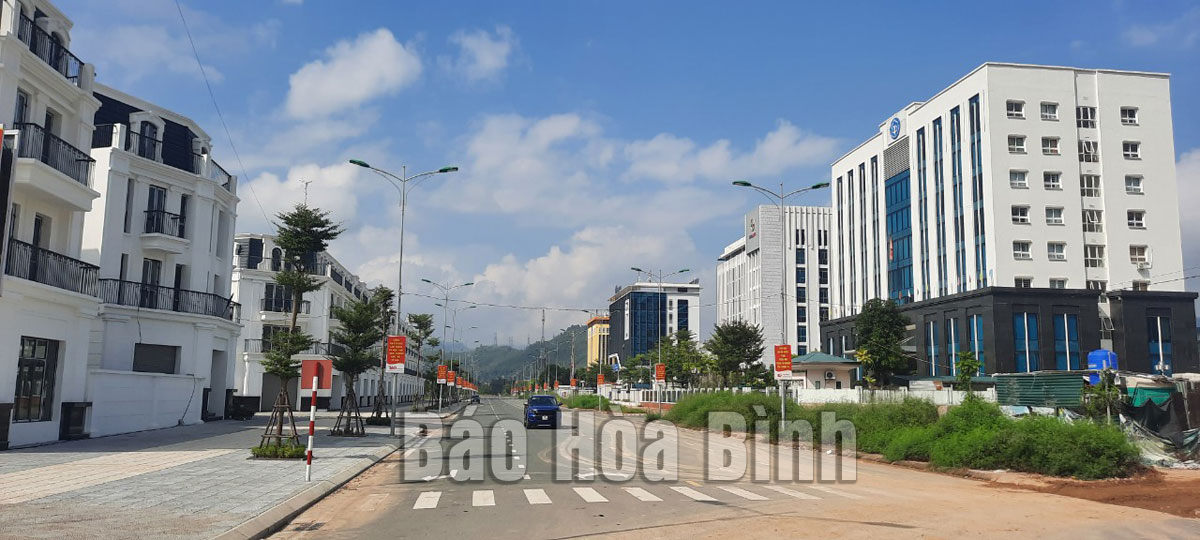
(HBO) – The Hoa Binh Civilisation is a renowned prehistoric civilisation in Vietnam and Southeast Asia. It is associated with French archaeologist Madeleine Colani (1866 - 1943), who discovered, studied, and named this civilisation between 1926 and 1931.
Street QH7 in Quynh Lam ward of Hoa Binh city has the
honour to be named after M. Colani, who gave the Hoa Binh Civilisation its
name.
The Hoa Binh Civilisation existed in not only
Vietnam but also across Southeast Asia. Hoa Binh province is home to the
biggest number of relic sites dating back to this civilisation. As those sites
own the most typical features of the civilisation, international scientists
agreed to name it Hoa Binh.
M. Colani was a geologist, palaeontologist, and
archaeologist who made substantial contributions to the formation and
development of archaeology in Vietnam and Indochina as a whole. Aside from the
Hoa Binh Civilisation, she was also linked with the discovery of the Bac Son,
Ha Long, and Sa Huynh civilisations and the Plain of Jars in Indochina during
the French colonial rule.
From 1926 to 1932, through surveys and
investigations in limestone mountainous areas in the provinces of Hoa Binh,
Ninh Binh, Thanh Hoa, and Quanh Binh, Colani discovered and excavated 54 relic
sites of the Hoa Binh Civilisation in northern Vietnam, most of which were
located in Hoa Binh. Findings indicated a Stone Age civilisation that existed
before the previously found Bac Son Civilisation.
In the study "Decouverte du Paléolithique dans
la province de Hoa Binh” (Discovery of the Palaeolithic in the province of Hoa
Binh) published on the anthropology journal in 1927, she mentioned the term
"Hoa Binh Civilisation” for the first time and pointed out its basic
characteristics and three development phases from the late Old Stone Age to the
New Stone Age.
At the first conference on prehistoric studies
of the Far East held in Hanoi in January 1932, Colani presented sufficient
evidence testifying to the existence of an ancient civilisation different from
the already known prehistoric civilisations in the world. Her proposal to name
this civilisation Hoa Binh was also approved.
As 2022 marks the 90th year since the world’s
recognition of the Hoa Binh Civilisation, at the start of this year, the
provincial People’s Committee issued Plan No 50/KH-UBND on the organisation of
cultural, sports and tourism events to celebrate this anniversary.
Notably, the provincial People’s Council
released Resolution No 177/NQ-HDND on August 29 to name Street QH7 in Quynh Lam
ward of Hoa Binh city after the archaeologist. This is one of the most
beautiful streets in the vicinity of Hoa Binh Square. The street nameplate is
scheduled to be unveiled on the 90th anniversary of the Hoa Binh Civilisation
recognition./.
With an increasingly vibrant and widespread emulation movement aimed at building cultured residential areas and cultured families, Yen Thuy District has been making steady progress toward improving both the material and spiritual well-being of its people, while fostering a civilized, prosperous, beautiful, and progressive community.
Once lacking recreational spaces and community facilities, Residential Group 2 in Quynh Lam Ward (Hoa Binh City) has recently received attention for the construction of a new, spacious, and fully equipped cultural house. The project followed the model of state support combined with public contributions in both labor and funding.
The "All people unite to build cultural life" movement, which has been effectively integrated with Kim Boi district’s socio-economic development goals, is fostering a lively spirit of emulation across local residential areas, hamlets, villages, public agencies, and enterprises. In addition, through the initiative, traditional cultural values are being preserved and promoted, while community solidarity and mutual support in poverty reduction and economic development are being strengthened.
A working delegation of the Hoa Binh provincial People’s Committee led by its Permanent Vice Chairman Nguyen Van Toan on June 11 inspected the progress of a project to build the Mo Muong Cultural Heritage Conservation Space linked to tourism services in Hop Phong commune, Cao Phong district.
Born and growing in the heroic land of Muong Dong, Dinh Thi Kieu Dung, a resident in Bo town of Kim Boi district, in her childhood was nurtured by the sweet lullabies of her grandmother and mother. These melodies deeply imprinted on her soul, becoming an inseparable part of her love for her ethnic group's culture. For over 20 years, this love for her hometown has driven Dung to research, collect, and pass down the cultural values of the Muong people to future generations.
In the final days of May, the Ethnic Art Troupe of Hoa Binh Province organized performances to serve the people in remote, mountainous, and particularly disadvantaged areas within the province. These were not just ordinary artistic shows, but they were the meaningful journeys aimed at spreading cultural values, enhancing the spiritual life of the people and contributing to the preservation of ethnic minority cultural identities.



